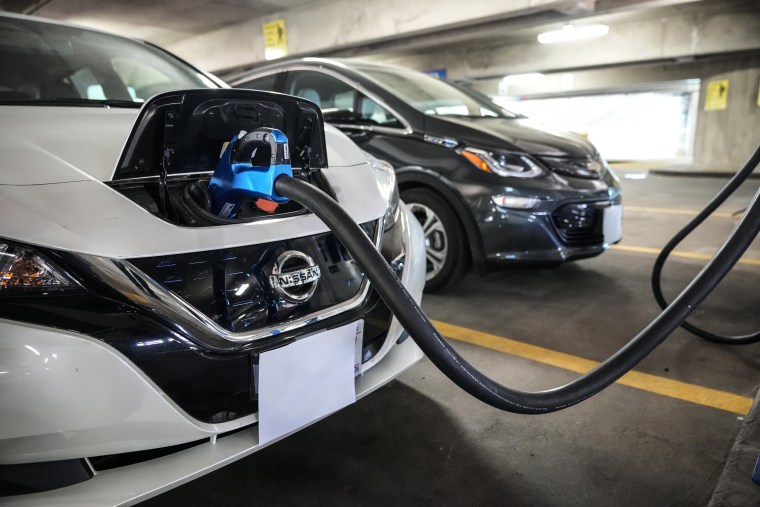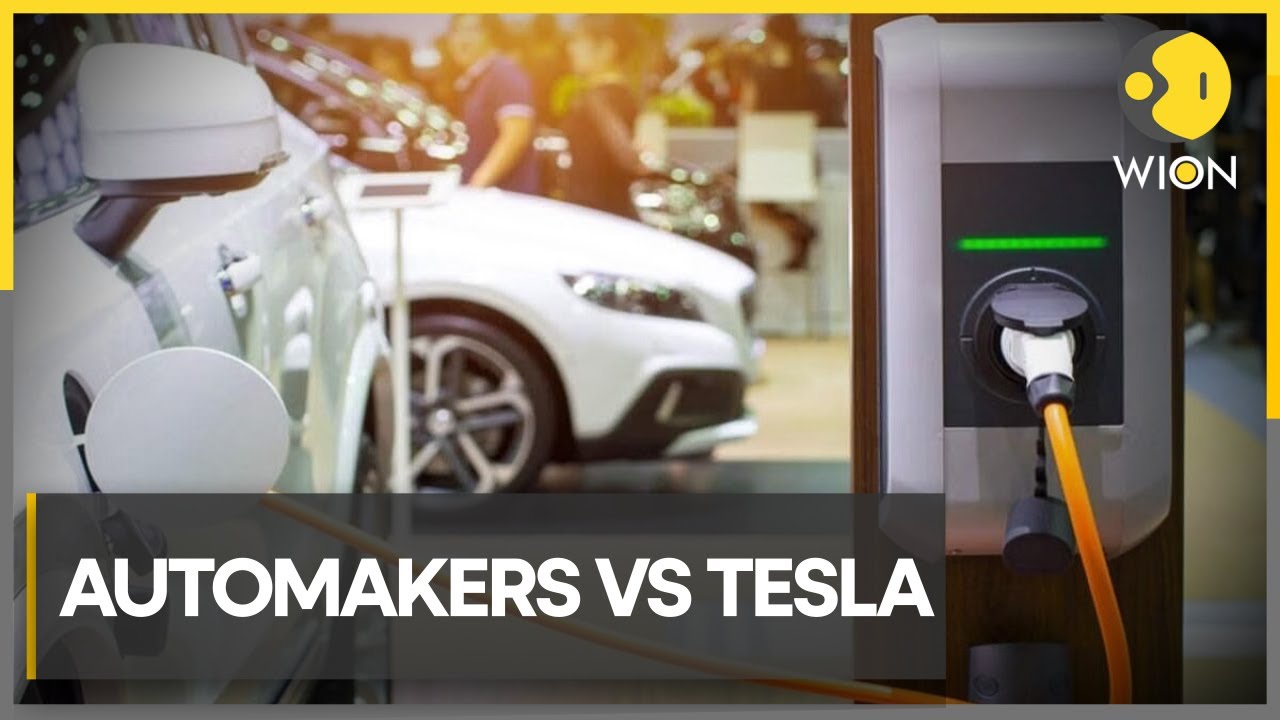How to Make Smarter Decisions in EV Investments by Buying EV Charging news
How to Make Smarter Decisions in EV Investments by Buying EV Charging news
Blog Article
Leading EV Charging Information: Trick Updates on Facilities and Advancement

Recent Advancements in Fast-Charging Innovation
In addition, innovations in battery modern technology, consisting of improved thermal monitoring systems and greater power thickness batteries, complement fast-charging capabilities. These developments mitigate the threat of battery degradation during rapid charging, making sure long life and efficiency for EV owners.
In addition, the combination of clever billing services is improving user experience, making it possible for real-time monitoring and vibrant pricing designs. EV Charging news. This adaptability permits drivers to enhance charging times and prices based on grid need
As car manufacturers continue to invest in fast-charging networks, the collaboration between market stakeholders is vital. Collaborations between billing station companies and vehicle makers are leading the way for considerable coverage, eventually cultivating an extra durable EV environment. These improvements are critical in supporting the transition to sustainable transportation.
Federal Government Efforts for Charging Expansion
Federal government initiatives play a crucial role in the expansion of electric automobile (EV) billing framework, assisting in the transition to sustainable transportation. Different government and state programs are being applied to improve billing ease of access, decrease the monetary concern on consumers, and promote the fostering of electrical automobiles.
Notably, the U.S. federal government has assigned considerable funding through the Facilities Financial Investment and Jobs Act, which allocates $7.5 billion for EV charging network advancement across the nation. This financing is focused on releasing countless new charging terminals, specifically in underserved locations, consequently attending to array stress and anxiety among possible EV buyers.
Furthermore, countless states are establishing regulation to simplify the permitting process for billing station installations, which is important for increasing release. Rewards such as tax credit scores and rebates for both customers and companies are additionally being presented to urge the installation of billing infrastructure.
Additionally, public-private partnerships are significantly coming to be a focus, leveraging private financial investment to enhance federal government funding. These campaigns emphasize a collaborative strategy essential for developing a reliable and detailed EV charging network, inevitably contributing to a greener and even more sustainable future.
Innovative Battery Solutions Enhancing Efficiency
Changing the landscape of electric automobile (EV) technology, innovative battery solutions are considerably boosting efficiency and performance. Developments in battery chemistry, specifically with lithium-sulfur and solid-state batteries, are causing increased energy density, which allows for longer varieties and faster billing times. These brand-new battery types have the potential to outmatch traditional lithium-ion batteries by supplying higher capabilities while reducing weight, thus boosting general automobile effectiveness.
In addition, developments in battery administration systems (BMS) are enhancing energy usage and expanding battery life-span. Smart algorithms keep track of battery health and efficiency, allowing real-time adjustments to charging and discharging procedures. This not just enhances the official website performance of the battery yet additionally ensures a more reliable and sustainable energy source for EVs.
Furthermore, the combination of recycling technologies is resolving the ecological effect of battery production and disposal. Innovations in second-life applications for EV batteries are facilitating their usage in energy storage space systems, adding to a round economic climate.
As these innovative battery solutions remain to advance, they promise to change the resource EV market, making electric vehicles extra accessible and enticing to a broader target market while sustaining global sustainability objectives.

Partnership In Between Automakers and Charging Networks
Recognizing the critical demand for a durable billing framework, automakers are progressively collaborating with charging network suppliers to boost the EV possession experience (EV Charging news). These partnerships aim to develop a smooth charging ecosystem that benefits customers and sustains the transition to electrical cars
Significant automotive brands are signing up with forces with recognized charging networks to expand their charging station insurance coverage, guaranteeing drivers have access to hassle-free and trusted charging choices. As an example, partnerships with networks like ChargePoint and Electrify America allow car manufacturers to integrate charging options directly into their automobiles' navigating systems, leading customers to the nearby stations and offering real-time schedule updates.
In addition, these cooperations frequently result in the development of fast-charging modern technologies that dramatically reduce the moment needed to charge an EV. By merging sources and experience, car manufacturers and billing networks can introduce quicker, developing solutions that fulfill the expanding need for electric wheelchair.
Additionally, joint efforts may likewise lead to even more standardized charging protocols, which can ease consumer confusion and promote more comprehensive EV adoption. Generally, these critical alliances are essential in building a effective and straightforward billing facilities that meets the needs of an expanding electrical vehicle market.
Challenges Encountering EV Billing Facilities
As the electrical automobile market continues to expand, several challenges are appearing that impede the growth of an extensive charging framework. Among the key challenges is the insufficient variety of charging terminals, specifically in rural and underserved metropolitan areas. This space develops variety stress and anxiety amongst prospective EV purchasers, preventing them from making the switch.
Additionally, the absence of standardization accountable modern technology complicates the infrastructure landscape. Variations in plug kinds and charging rates can create confusion for individuals and enhance functional intricacies for billing network drivers. The combination of charging terminals into click reference existing electrical grids presents significant difficulties. Numerous areas encounter capacity constraints, requiring significant financial investments in grid upgrades to fit raised need.
One more pressing problem is the high cost related to the installation and maintenance of billing terminals, which can be an obstacle for both private companies and public entities. Regulative difficulties and zoning limitations can postpone the implementation of billing framework, hindering progression in increasing vital solutions. Attending to these obstacles will certainly be essential for promoting a robust EV ecological community that sustains the transition to lasting transportation.
Conclusion
To conclude, the recurring developments in EV billing technology, supported by substantial federal government efforts and ingenious battery remedies, are crucial for the growth and performance of electric automobile facilities. Partnerships in between automakers and charging service providers even more enhance terminal protection, attending to the growing need for available charging options. In spite of obstacles that linger within the EV charging landscape, these growths signify a positive trajectory in the direction of an extra lasting and efficient electric vehicle ecosystem.
Advancements in billing framework have led to the advancement of ultra-fast battery chargers qualified of supplying up to 350 kW of power, dramatically reducing charging times. Variants in plug types and charging speeds can create confusion for users and raise functional complexities for billing network drivers.In final thought, the ongoing improvements in EV billing technology, sustained by significant government efforts and cutting-edge battery solutions, are important for the growth and performance of electric car facilities. Partnerships between automakers and billing carriers even more improve station coverage, addressing the expanding need for easily accessible charging alternatives. Despite challenges that linger within the EV charging landscape, these advancements symbolize a positive trajectory in the direction of a much more reliable and sustainable electric automobile ecological community.
Report this page